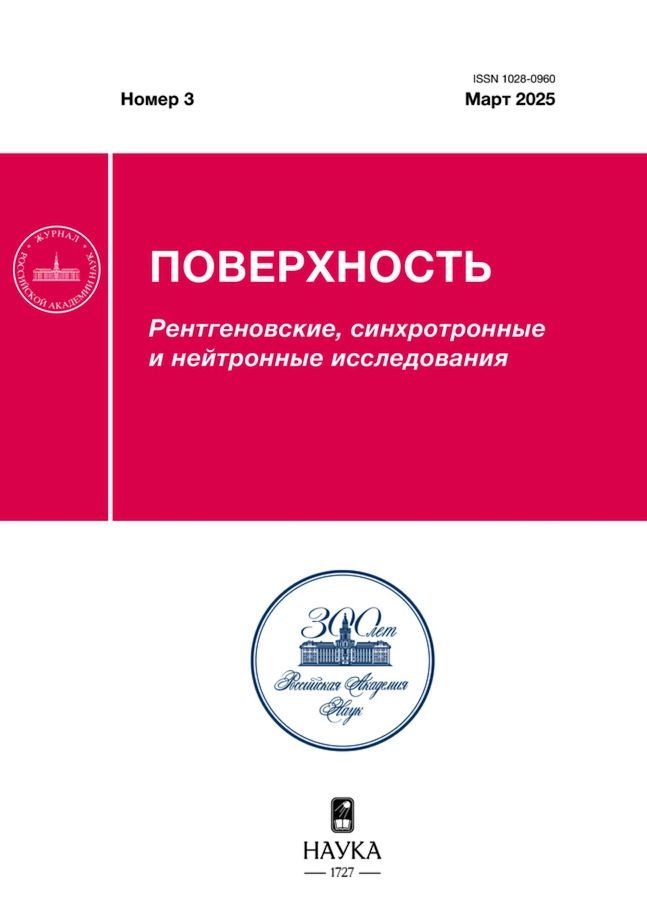Influence of UV and visible radiation on optical properties of coatings based on two-layer hollow particles of silicon dioxide and zinc oxide
- Authors: Fedosov D.S.1, Neshchimenko V.V.2, Mikhailov M.M.1,2, Yuryev S.A.1,2
-
Affiliations:
- Tomsk State University of Control Systems and Radioelectronics
- Аmur State University
- Issue: No 3 (2025)
- Pages: 51-56
- Section: Articles
- URL: https://j-morphology.com/1028-0960/article/view/687673
- DOI: https://doi.org/10.31857/S1028096025030087
- EDN: https://elibrary.ru/ELUPJJ
- ID: 687673
Cite item
Abstract
A comparative analysis in situ of diffuse reflection spectra in the range from 200 to 2500 nm and their changes after irradiation of coatings based on polymethylphenylsiloxane resin and pigment powders of two-layer hollow particles ZnO/SiO2 and SiO2/ZnO was carried out. Irradiation was performed with light from a xenon arc lamp simulating the solar radiation spectrum, with an intensity of 3 e.s.i. (equivalent of solar irradiation, 1 e.s.i. = 0.139 W/cm2). The photostability of the studied coatings based on two-layer hollow ZnO/SiO2 and SiO2/ZnO particles was estimated relative to coatings based on ZnO polycrystals from an analysis of the difference diffuse reflectance spectra obtained by subtracting the spectra of unirradiated and irradiated samples. It has been found that the intensity of the induced absorption bands in coatings based on ZnO/SiO2 and SiO2/ZnO hollow particles is lower than in coatings based on ZnO microparticles, and the radiation resistance when assessing changes in solar absorptance (ΔαS) is twice as high. The increase in photostability is probably determined by the different nature of defect accumulation: for bulk microparticles, radiation defects can accumulate inside the grains, while in hollow particles, the accumulation of defects can occur only within the thin shell of the sphere.
Full Text
About the authors
D. S. Fedosov
Tomsk State University of Control Systems and Radioelectronics
Email: v1ta1y@mail.ru
Russian Federation, Tomsk
V. V. Neshchimenko
Аmur State University
Author for correspondence.
Email: v1ta1y@mail.ru
Russian Federation, Blagoveshchensk
M. M. Mikhailov
Tomsk State University of Control Systems and Radioelectronics; Аmur State University
Email: v1ta1y@mail.ru
Russian Federation, Tomsk; Blagoveshchensk
S. A. Yuryev
Tomsk State University of Control Systems and Radioelectronics; Аmur State University
Email: v1ta1y@mail.ru
Russian Federation, Tomsk; Blagoveshchensk
References
- Li C., Liang Z., Xiao H., Wu Y., Liu Y. // Mater. Lett. 2010. V. 64. № 18. P. 1972. https://doi.org/10.1016/j.matlet.2010.06.027
- Wang Y., Sunkara B., Zhan J., He J., Miao L., McPherson G.L., John V.T., Spinu L. // Langmuir. 2012. V. 28. P. 13783. https://doi.org/10.1021/la302841c
- Rasmidi R., Duinong M., Chee F.P. // Radiat. Phys. Chem. 2021. V. 184. P. 109455. https://doi.org/10.1016/j.radphyschem.2021.109455
- Li C., Mikhailov M.M., Neshchimenko V.V. // Nucl. Instrum. Methods Phys. Res. B. 2014. V. 319. P. 123. https://doi.org/10.1016/j.nimb.2013.11.007
- Zatsepin A.F., Kortov V.S., Biryukov D.Y. // Radiat. Eff. Def. Solids. 2002. V. 157. P. 595. https://doi.org/10.1080/10420150215765
- Nishikawa H., Watanabe E., Ito D., Ohki Y. // J. Non-cryst. Solids. 1994. V. 179. P. 179. https://doi.org/10.1016/0022-3093(94)90695-5
- Boscaino R., Cannas M., Gelardi F.M., Leone M. // Nucl. Instrum. Methods. Phys. Res. B. 1996. V. 116. P. 373. https://doi.org/10.1016/0168-583X(96)00073-0
- Radtsig R.A.B., Senchenya I.N. // Russ. Chem. Bull. 1996. V. 45. P. 1849. https://doi.org/10.1007/BF01457762
- Skuja L. // J. Non-Cryst. Solids. 1998. V. 239. P. 16. https://doi.org/10.1016/S0022-3093(98)00720-0
- Pantelides S.T., Lu Z.-Y., Nicklaw C., Bakos T., Rashkeev S.N., Fleetwood D.M., Schrimpf R.D. // J. Non-Cryst. Solids. 2008. V. 354. P. 217. https://doi.org/10.1016/j.jnoncrysol.2007.08.080
- Erhart P., Albe K., Klein A. // Phys. Rev. B. 2006. V. 73. P. 205203. https://doi.org/10.1103/PhysRevB.73.205203
- Oba F., Togo A., Tanaka I., Paier J., Kresse G. // Phys. Rev. B. 2008. V. 77. P. 245202. https://doi.org/10.1103/PhysRevB.77.245202
- Lima S.A.M., Sigoli F.A., Jafelicci M.Jr., Davolos M.R. // Int. J. Inorg. Mater. 2001. V. 3. P. 749. https://doi.org/10.1016/S1466-6049(01)00055-1
- Hu J., Pan B.C. // J. Chem. Phys. 2008. V. 129. P. 154706. https://doi.org/10.1063/1.2993166
- Sun Y., Wang H. // Physica B. 2003. V. 325. P. 157. https://doi.org/10.1016/S0921-4526(02)01517-X
- Lin B., Fu Z., Jia Y. // Appl. Phys. Lett. 2001. V. 79. P. 943. https://doi.org/10.1063/1.1394173
- Дудин А.Н., Юрина В.Ю., Михайлов М.М., Ли Ч., Нещименко В.В. // Изв. вузов. Физика. 2023. Т. 66. № 7 (788). С. 117. https://doi.org/10.17223/00213411/66/7/14
- Дудин А.Н., Нещименко В.В., Ли Ч. // Поверхность. Рентген., синхротр. и нейтрон. исслед. 2022. № 4. С. 70. https://doi.org/10.31857/S1028096022040069
- Kositsyn L.G., Mikhailov M.M., Kuznetsov N.Y., Dvoretskii M.I. // Instrum. Experim. Tech. 1985. V. 28. P. 929.
- ASTM E490-00a Standard Solar Constant and Zero Air Mass Solar Spectral Irradiance Tables. 2019.
- ASTM E903-96 Standard Test Method for Solar Absorptance, Reflectance, and Transmittance of Materials Using Integrating Spheres. 2005.
Supplementary files

















